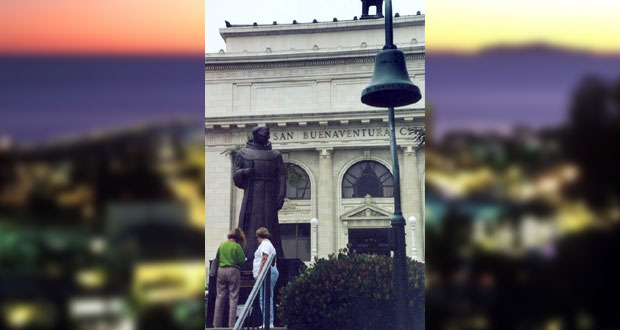
By Cecil Scaglione
Ventura CA— One of the biggest mysteries to locals is why the ghost of Erle Stanley Gardner hasn’t lured more visitors to his home town.
Hundreds of thousands of tourists and travelers, most of them from the sprawling Los Angeles metropolis an hour away, visit Santa Barbara next door each year. Local tourism tub thumpers watch as traffic streams by on Highway 101, which is ironically better known as the Ventura Freeway.
Visitors can watch from the Wyndham Garden Ventura Pierpont Inn, where the creator of Perry Mason went for victory dinners after his successes in the nearby Ventura County courthouse. Gardner began his 150‑novel career, which he launched with a short story using the pseudonym Charles M. Green, in his second‑floor law office at California and Main streets overlooking downtown’s commercial core.
He didn’t have to turn to writing to achieve success, said Richard Senate, who has written about Ventura’s most famous resident and bills himself as a tour guide and ghost hunter.
“Erle Stanley Gardner was a good lawyer,” Senate said. “He was a founder of the Downtown Lions Club and the Elks Club here. But he was — he would have liked to have been ‑‑ Perry Mason. He actually did pull off some of the stunts that appeared in the Perry Mason books, movies, radio shows, comic books and television shows.”

Visitors to the real courtroom enter the City of Buenaventura ‑‑ railway officials shortened the city’s name because it was too long for their schedules – civic center through its bronze sliding grilled entrance adorned with depictions of lima beans. (“Ventura was once the lima‑bean capital of the world,” Senate explained.)
The building, perched on a hill overlooking Gardner’s office, served as a courthouse until it was scheduled for demolition after a 1962 earthquake. The city bought and made it quake‑proof. The prototype of Perry Mason’s courtroom is on the second floor.
Hanging along marble‑lined corridors throughout the building are reminders of the city’s heyday as an oil‑drilling hub.
“A young Navy officer named George Bush came here with his family in 1949 to learn the oil business,” Senate said.
Keeping an eye on the comings and goings in front of City Hall is a bronze statue of Fr. Junipero Serra, the Franciscan friar who founded Mission San Buenaventura in 1782. The mission, a half‑dozen blocks below the civic center, features a triangular buttress across its face ‑‑ a support installed after an 1812 earthquake fractured its face. Also visible are two metal crosses embedded on each side of the front door. These are assurances that the building will remain operating as a Roman Catholic church into perpetuity.
Visitors can circle these two complexes on a variety of walking and motor tours of such attractions as blocks of Victorian houses, oil‑boom mansions from the 1920s, flower gardens, some three‑dozen antique boutiques downtown alone, and a meandering string of art studios, galleries and workshops. They can also try to uncover the location of Mission San Buenaventura’s legendary treasure chest crammed with gold and silver.
But there’s a lot more.
Ventura’s 135-year-old pier and oceanfront harbor village offer marine diversions to please all ages. Boats shuttle several times a day to and from the Channel Islands for hiking, picnicking, snorkeling and camping.
The crossing can take up to an hour depending on what vessel and price you choose. Whatever your choice, it’s worth it to watch porpoise pods slip, slide, slap, soar, swoop and swish all around your boat as pelicans patrol overhead. You also might encounter gray, minke, humpback or blue whales.
Amtrak makes it relatively easy to visit Ventura. A dozen passenger trains a day stop in the heart of town.
Cecil Scaglione is a former San Diego Union-Tribune writer and for a number of years has been a world traveler, writer and currently a syndicated columnist. His travel column appears once a month in OsideNews.




